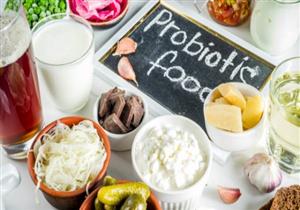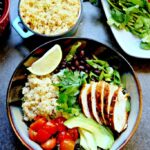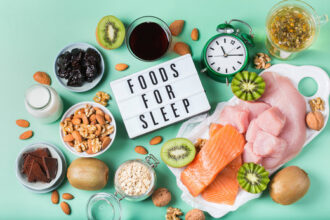Best Foods for Gut Health and Good Bacteria
Maintaining a healthy gut is one of the most powerful ways to improve overall health. The gut—often called the “second brain”—is home to trillions of bacteria, both good and bad. When the balance between them is healthy, digestion improves, immunity strengthens, and mood stabilizes. But when harmful bacteria take over, it can lead to bloating, fatigue, skin problems, and even chronic illnesses.
The good news? You can feed your good bacteria and create a thriving gut microbiome simply by eating the right foods.
In this article, we’ll explore the best foods for gut health, why they work, and how to include them in your daily meals.
Why Gut Health Matters
Your gut microbiome plays a role in:
- Digestion and nutrient absorption – Healthy bacteria help break down food and absorb vitamins.
- Immune function – About 70% of the immune system resides in the gut.
- Mental health – Gut bacteria produce neurotransmitters like serotonin, which affect mood.
- Weight control – A balanced microbiome supports a healthy metabolism.
- Inflammation control – Good bacteria keep harmful microbes in check and reduce inflammation.
Best Foods for Gut Health and Good Bacteria
1. Yogurt
- Why it’s good: Yogurt is rich in probiotics—live beneficial bacteria that can directly boost your gut microbiome.
- Best choice: Go for plain, unsweetened yogurt with “live and active cultures” listed on the label.
- How to eat it: Add fresh fruits, a sprinkle of chia seeds, or a drizzle of honey for a gut-friendly breakfast.
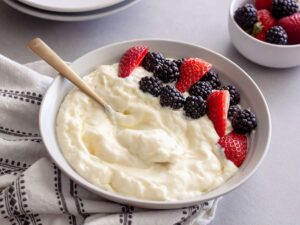
2. Kefir
- Why it’s good: Kefir is a fermented milk drink with even more diverse probiotic strains than yogurt.
- Best choice: Choose plain kefir without added sugars for maximum benefit.
- How to eat it: Drink it straight, blend into smoothies, or use it as a base for salad dressings.
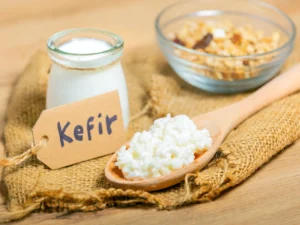
3. Sauerkraut
- Why it’s good: This fermented cabbage is packed with probiotics and fiber, which help good bacteria flourish.
- Best choice: Opt for raw, unpasteurized sauerkraut—pasteurization kills probiotics.
- How to eat it: Add it as a side to sandwiches, wraps, or grilled meats.
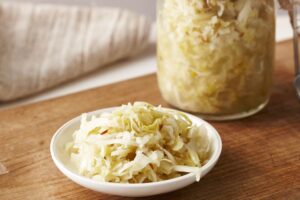
4. Kimchi
- Why it’s good: A spicy Korean fermented dish made from cabbage and radish, kimchi contains probiotics and antioxidants.
- Best choice: Look for traditional, naturally fermented kimchi without preservatives.
- How to eat it: Enjoy as a side dish, in fried rice, or in soups for a probiotic boost.

5. Garlic
- Why it’s good: Garlic is a prebiotic—it feeds good bacteria so they can grow stronger.
- Best choice: Fresh, raw garlic offers the highest benefits.
- How to eat it: Mince it into salad dressings, sauces, or dips like hummus.
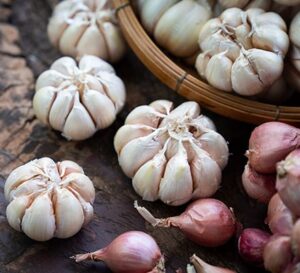
6. Onions
- Why it’s good: Like garlic, onions are rich in prebiotics and antioxidants.
- Best choice: Red onions have the highest antioxidant content.
- How to eat it: Add raw slices to salads or lightly sauté for stir-fries.
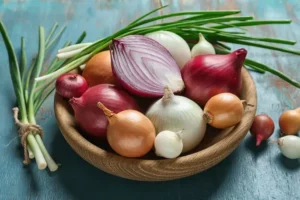
7. Bananas
- Why it’s good: Bananas contain prebiotic fibers like inulin, which feed beneficial bacteria.
- Best choice: Slightly green bananas are richer in resistant starch.
- How to eat it: Slice into oatmeal, smoothies, or yogurt bowls.
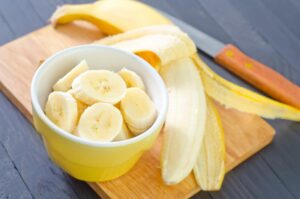
8. Oats
- Why it’s good: Oats are rich in beta-glucan fiber, which supports good gut bacteria.
- Best choice: Choose whole rolled or steel-cut oats over instant varieties.
- How to eat it: Cook as oatmeal or use in overnight oats with fruit and seeds.
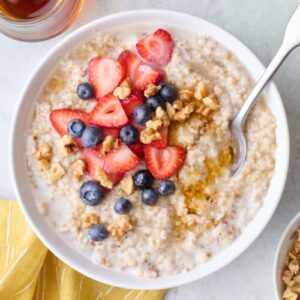
9. Legumes (Lentils, Chickpeas, Beans)
- Why it’s good: High in prebiotic fiber, legumes nourish beneficial gut microbes.
- Best choice: Soak and cook well to improve digestibility.
- How to eat it: Add to soups, salads, or stews for a filling meal.
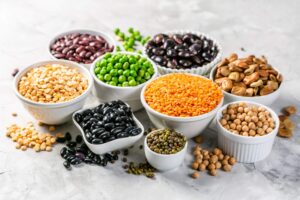
10. Berries
- Why it’s good: Blueberries, raspberries, and strawberries are rich in antioxidants and fiber for gut health.
- Best choice: Fresh or frozen berries both work well.
- How to eat it: Mix into yogurt, oatmeal, or enjoy as a snack.
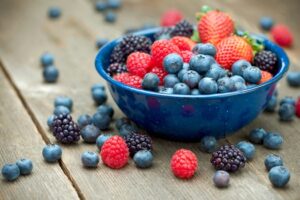
11. Green Leafy Vegetables
- Why it’s good: Spinach, kale, and Swiss chard contain fiber and plant compounds that encourage good bacteria growth.
- Best choice: Organic greens to avoid pesticide residue.
- How to eat it: Add to smoothies, salads, or lightly steam as a side dish.
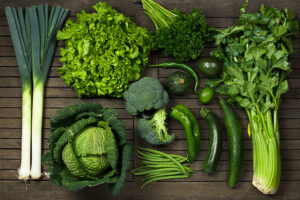
12. Dark Chocolate
- Why it’s good: High-quality dark chocolate contains polyphenols that act as prebiotics.
- Best choice: 70% cocoa or higher, minimal sugar.
- How to eat it: Enjoy a small square after meals for a healthy treat.

Tips for Building a Gut-Friendly Diet
- Limit processed foods and sugars – They feed harmful bacteria.
- Stay hydrated – Water helps probiotics survive and function.
- Eat a variety of fiber-rich foods – Diversity is key to a healthy microbiome.
- Include both probiotics and prebiotics – Probiotics add good bacteria, prebiotics feed them.
Conclusion
Your gut health is deeply connected to your digestion, immunity, mood, and long-term wellness. By adding probiotic-rich foods like yogurt, kefir, kimchi, and sauerkraut—alongside prebiotic-rich foods like garlic, onions, bananas, and oats—you can create the perfect environment for beneficial bacteria to thrive.

